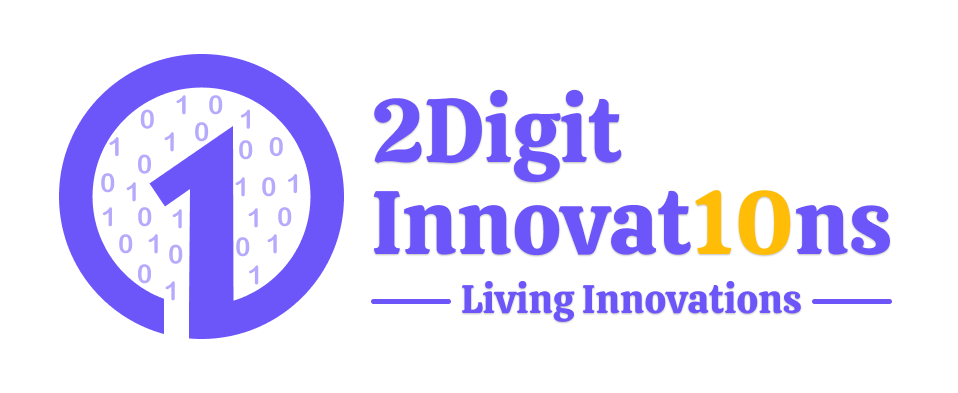
The Ultimate Social Media Marketing Guide: Tips and Tools for Success
25 Jun 24
The Ultimate Social Media Marketing Guide: Tips and Tools for Success
Social media marketing has become an essential part of any successful business strategy. But with so many platforms and constantly evolving trends, how do you ensure your social media marketing efforts are effective? In this ultimate guide, we’ll provide you with tips and tools to navigate the dynamic world of social media marketing.
Table of Contents | Sr | Headings |-----|--------------------------------------| | 1 | Introduction | 2 | Understanding Social Media Marketing | 3 | Setting Clear Goals | 4 | Identifying Your Target Audience | 5 | Choosing the Right Platforms | 6 | Creating Engaging Content | 7 | Utilizing Social Media Tools | 8 | Building a Content Calendar | 9 | Engaging with Your Audience | 10 | Measuring Success | 11 | Staying Updated with Trends | 12 | Leveraging Influencers | 13 | Running Paid Campaigns | 14 | Integrating with Other Marketing Efforts | 15 | Conclusion | 16 | FAQs 1. Introduction Social media is more than just a platform for sharing cat videos and keeping up with friends. It’s a powerful tool for businesses to reach new audiences, engage with customers, and grow their brand. But how do you make the most of it? Let’s dive in. 2. Understanding Social Media Marketing Social media marketing involves using social media platforms to promote your products or services, engage with your audience, and drive traffic to your website. Think of it as modern-day word-of-mouth but on a much larger scale. To break it down further, social media marketing encompasses several activities, including content creation, paid advertising, community engagement, and social listening. Each of these activities contributes to building a robust online presence and fostering meaningful connections with your audience. 3. Setting Clear Goals Before you start posting, it’s crucial to have clear goals. Are you looking to increase brand awareness, drive website traffic, or boost sales? Setting specific, measurable, achievable, relevant, and time-bound (SMART) goals will help you track your progress and adjust your strategy as needed. For example, a goal could be to increase your Instagram followers by 20% over the next three months. This goal is specific (Instagram followers), measurable (20% increase), achievable (realistic target), relevant (aligned with overall business objectives), and time-bound (three months). 4. Identifying Your Target Audience Who are you trying to reach? Understanding your target audience is key to creating content that resonates. Consider factors such as age, gender, location, interests, and behavior. This will help you tailor your messages and choose the right platforms. Creating detailed buyer personas can be extremely helpful in this process. A buyer persona is a semi-fictional representation of your ideal customer based on market research and real data about your existing customers. The more detailed your personas, the better you can tailor your content and campaigns to meet their needs and preferences. 5. Choosing the Right Platforms Not all social media platforms are created equal. Each one has its own strengths and audience. For instance, LinkedIn is great for B2B marketing, while Instagram is perfect for visual content. Choose the platforms that align with your goals and where your target audience is most active. Here’s a brief overview of the most popular platforms: - Facebook: Ideal for community building and customer engagement. - Instagram: Great for visual storytelling and influencer partnerships. - Twitter: Useful for real-time updates and customer service. - LinkedIn: Best for B2B marketing and professional networking. - TikTok: Perfect for reaching younger audiences with short, engaging videos. 6. Creating Engaging Content Content is king. But creating content that engages your audience is an art. Use a mix of text, images, videos, and infographics. Tell stories that connect with your audience emotionally. Don’t just promote—inform, entertain, and inspire. Think of your content strategy as a balanced diet. Just as you need a mix of proteins, carbs, and fats for a healthy diet, your content should include a variety of types and formats to keep your audience engaged. Educational posts, behind-the-scenes content, user-generated content, and timely updates are all essential components of a well-rounded social media strategy. 7. Utilizing Social Media Tools There are numerous tools available to help streamline your social media marketing efforts. Tools like Hootsuite, Buffer, and Sprout Social can help you schedule posts, track engagement, and analyze performance. These tools save time and provide valuable insights. Additionally, tools like Canva and Adobe Spark can assist in creating visually appealing graphics, while platforms like BuzzSumo can help you find trending topics and content ideas. Using the right tools can significantly enhance your efficiency and effectiveness in managing social media campaigns. 8. Building a Content Calendar A content calendar is your roadmap for what and when to post. It helps ensure consistency and keeps your team on the same page. Plan your posts around important dates, holidays, and events relevant to your audience. When building your content calendar, consider the following steps: - Brainstorm Content Ideas: Collaborate with your team to generate a variety of content ideas. - Plan Your Posts: Schedule posts for optimal times based on when your audience is most active. - Include Themes and Campaigns: Integrate seasonal themes, marketing campaigns, and product launches into your calendar. - Monitor and Adjust: Regularly review your calendar’s performance and make adjustments as needed. 9. Engaging with Your Audience Social media is a two-way street. Engage with your audience by responding to comments, messages, and mentions. Show appreciation for their support and listen to their feedback. This builds a loyal community around your brand. Engagement can take many forms, from liking and replying to comments, to hosting live Q&A sessions, to running interactive polls and contests. The key is to create a dialogue with your audience, rather than just broadcasting messages. 10. Measuring Success How do you know if your social media efforts are paying off? Use analytics tools to measure key metrics such as engagement, reach, and conversion rates. This data helps you understand what’s working and what needs improvement. For example, Facebook Insights, Twitter Analytics, and Instagram Insights provide detailed data on your audience’s behavior and engagement. Google Analytics can help track how social media traffic is impacting your website’s performance. Regularly review these metrics to make data-driven decisions and refine your strategy. 11. Staying Updated with Trends Social media trends change rapidly. Staying updated with the latest trends can give you a competitive edge. Follow industry leaders, join social media groups, and keep an eye on trending hashtags and challenges. Some current trends include the rise of short-form video content (thanks to TikTok and Instagram Reels), the increasing importance of social commerce, and the growing use of augmented reality (AR) in social media filters and effects. Staying ahead of these trends can help you create more engaging and relevant content. 12. Leveraging Influencers Influencer marketing can amplify your reach. Collaborate with influencers who align with your brand values and have a genuine connection with their followers. Influencers can create authentic content that resonates with your target audience. When choosing influencers, consider factors such as their engagement rate, the authenticity of their content, and their relevance to your niche. Micro-influencers (with smaller but highly engaged followings) can often provide more value than macro-influencers with larger but less engaged audiences. 13. Running Paid Campaigns While organic reach is valuable, paid campaigns can significantly boost your visibility. Platforms like Facebook, Instagram, and LinkedIn offer robust advertising options. Experiment with different ad formats and targeting options to find what works best. Paid campaigns allow you to target specific demographics, interests, and behaviors, making them a powerful tool for reaching your ideal audience. Start with a small budget, test different creatives and messaging, and optimize based on performance data. 14. Integrating with Other Marketing Efforts Social media shouldn’t operate in a vacuum. Integrate your social media marketing with other efforts such as email marketing, SEO, and content marketing. This creates a cohesive strategy that maximizes your reach and impact. For example, you can promote your blog posts on social media to drive traffic to your website, use social media to grow your email list, and optimize your social media profiles for SEO by using relevant keywords and including links to your website. 15. Conclusion Social media marketing is a powerful tool for businesses of all sizes. By setting clear goals, understanding your audience, creating engaging content, and using the right tools, you can build a strong social media presence. Remember, the key is to be consistent, authentic, and always ready to adapt to changing trends. Social media success doesn't happen overnight. It requires continuous learning, experimentation, and a willingness to adapt. Stay patient, keep your audience at the heart of your strategy, and don't be afraid to take risks and try new things. FAQs 1. What are the best social media platforms for marketing? The best platforms depend on your target audience and goals. Facebook, Instagram, LinkedIn, Twitter, and TikTok are popular choices. Each platform has its unique strengths, so it’s important to choose the ones that align with your business objectives. 2. How often should I post on social media? Consistency is key. Posting once a day on platforms like Instagram and Facebook is a good starting point. However, the frequency can vary based on the platform and your audience. For example, Twitter may require more frequent posting due to its fast-paced nature. 3. How can I measure the success of my social media marketing? Use analytics tools to track metrics such as engagement, reach, website traffic, and conversion rates. This data helps you understand your performance and make informed decisions. Regularly review and analyze these metrics to continuously improve your strategy. 4. Should I use paid advertising on social media? Paid advertising can enhance your reach and drive targeted traffic. It’s worth experimenting with different ad formats and targeting options to see what works best for your business. Start with a small budget and optimize your campaigns based on performance data. 5. How do I handle negative comments on social media? Respond to negative comments professionally and promptly. Address the issue, offer a solution, and take the conversation offline if necessary. This shows that you care about your customers and are willing to resolve issues. Handling negative feedback well can enhance your brand’s reputation.


CALL
Ready to Work Together In New Projects ?
Services
App Development
Web App Development
Digital Marketing
UI And UX Designing
Custom Mobile And Web Development
Free Tools
Quick Links
Our Apps
Find us on Clutch
Privacy & Policy
Shipping & Delivery Policy
Return & Refund Policy
Terms & Condition
FAQs
Legal
Contact
Hyde Park Crown First Floor, FF-14-21 Plot No GH-03 Sector-78, Noida, Uttar Pradesh 201306
info@2digitinnovations.com
+91 7814042409
